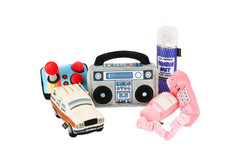If you have a dog, you may have noticed that they sometimes like to chew on the skirting board or the baseboard of your walls. This can be frustrating and damaging for both you and your dog, as it can ruin your furniture and pose a choking or injury risk for your furry friend. In this article, we will explore why dogs chew skirting boards and how to prevent or stop this behaviour.
Why Do Dogs Chew Skirting Boards?
Dogs chew on things for various reasons, depending on their age, personality, and environment. Some of the common reasons for your dog chewing skirting boards are:
- Boredom: Dogs need physical and mental stimulation to release energy and stay happy. If they don’t get enough exercise or entertainment, they may resort to chewing on things to relieve their boredom. Dogs that are left alone for long periods of time or have limited access to outdoor space are more prone to boredom.
- Anxiety: Dogs may chew on things as a way of coping with stress or fear, especially when left alone or in unfamiliar situations. This is known as separation anxiety or situational anxiety. Dogs that suffer from anxiety may also show signs of nervousness such as panting, trembling, or hiding.
- Teething: Puppies may chew on things to relieve the pain and discomfort of growing teeth. This usually happens between 3 and 6 months of age, when puppies lose their baby teeth and grow their adult teeth. During this period, puppies may drool, have swollen gums, or lose baby teeth.
- Curiosity: Dogs may chew on things to explore their environment and satisfy their natural instincts. They may sniff, lick, or paw at the skirting boards before chewing them. This is more common in young dogs or dogs that are new to a home.
- Lack of appropriate chew toys: Dogs may chew on skirting boards if they don’t have enough suitable alternatives to satisfy their chewing needs. Dogs need chew toys and bones that are durable, safe, and appealing to them. If they don’t have any toys or bones around them or if they ignore them, they may turn to the skirting boards instead.
How to Stop Your Dog from Chewing Skirting Boards?
If your dog is chewing on skirting boards, you may be wondering how you can stop this behaviour and prevent further damage to your home and your dog’s health. Here are some effective tips to stop your dog from chewing on skirting boards:
- Take your dog for more walks: One of the best ways to stop your dog from chewing on skirting boards is to provide them with enough physical exercise. Walking your dog regularly will help them burn off excess energy, reduce boredom, and relieve stress. It will also give them a chance to explore new sights, smells, and sounds, and satisfy their natural curiosity. Aim to walk your dog at least twice a day, for at least 30 minutes each time.
- Play with your dog more often: Another way to stop your dog from chewing on skirting boards is to provide them with more mental stimulation and social interaction. Playing with your dog will help them have fun, bond with you, and learn new skills. It will also keep them occupied and distracted from chewing on skirting boards. You can play fetch, tug-of-war, hide-and-seek, or other games with your dog, using their favourite toys or treats. You can also teach them new tricks or commands, or enroll them in a training class or a dog sport.
- Keep your dog occupied with chew toys and bones: A third way to stop your dog from chewing on skirting boards is to give them access to appropriate chew toys and bones that satisfy their chewing needs and preferences. Chew toys and bones can help your dog relieve their teething pain, clean their teeth, and fulfill their natural urge to chew. They can also keep them busy and entertained for hours. Make sure you choose chew toys and bones that are safe, durable, and suitable for your dog’s size, age, and chewing style. You can also rotate the chew toys and bones every few days to keep them interesting for your dog.
- Spray the skirting boards with a bitter-tasting substance: A fourth way to stop your dog from chewing on skirting boards is to make them taste unpleasant for your dog. You can spray the skirting boards with a bitter-tasting substance that is safe for dogs, such as apple cider vinegar, lemon juice, or a commercial anti-chew spray. This will make your dog dislike the taste of the skirting boards and discourage them from chewing on them. However, you should test the substance on a small area of the skirting board first, to make sure it does not damage or stain it. You should also reapply the substance regularly, as it may wear off over time.
- Keep your dog away from the skirting board by using a puppy pen or crate: A fifth way to stop your dog from chewing on skirting boards is to limit their access to the skirting board by using a puppy pen or crate.A puppy pen or crate is a safe and comfortable space where you can keep your dog when you are not able to supervise them or when you are away from home. It can prevent your dog from roaming around the house and chewing on things they shouldn’t, such as skirting boards. However, you should make sure that the puppy pen or crate is large enough for your dog to move around, lie down, and stand up comfortably. You should also provide your dog with water, food, bedding, and chew toys and bones inside the pen or crate. You should also train your dog to associate the pen or crate with positive experiences, such as treats, praise, and toys, and not use it as a punishment or a way to isolate your dog.
- Put something in front of the skirting board to block access to it: A sixth way to stop your dog from chewing on skirting boards is to put something in front of the skirting board to block access to it. You can use furniture, boxes, plants, or other objects that are sturdy and stable enough to prevent your dog from reaching the skirting board. This can be a temporary or a permanent solution, depending on your preference and situation. However, you should make sure that the objects you use are not harmful or dangerous for your dog, such as sharp, toxic, or breakable items
How to Train Your Dog to Chew on Toys Instead of Skirting Boards?
While stopping your dog from chewing on skirting boards is important, it is not enough to solve the problem completely. You also need to train your dog to chew on appropriate items instead of skirting boards. This will help your dog learn what they can and cannot chew on, and develop good chewing habits. Here are some steps on how to train your dog to chew on toys instead of skirting boards:
- Step 1: Teach your dog basic commands such as come, sit, and stay: Before you start training your dog to chew on toys instead of skirting boards, you need to teach them some basic commands that will help you control and communicate with them. These commands include come, sit, and stay. These commands will help you call your dog away from the skirting board, make them sit in front of you, and keep them in place while you give them a toy or a treat. To teach these commands, you need to use positive reinforcement and repetition. Positive reinforcement means rewarding your dog with treats, praise, or toys whenever they obey your command. Repetition means practicing the command several times a day until your dog learns it well.
- Step 2: Catch your dog in the act of chewing on the skirting board: The next step is to catch your dog in the act of chewing on the skirting board. This will help you correct their behaviour and redirect their attention to something else. To catch your dog in the act of chewing on the skirting board, you need to supervise them closely when they are near the skirting board, or use a camera or a baby monitor to watch them when you are not around. As soon as you see your dog chewing on the skirting board, you need to act quickly and firmly.
- Step 3: Interrupt your dog’s chewing with a loud noise or a verbal cue: The third step is to interrupt your dog’s chewing with a loud noise or a verbal cue. This will help you get their attention and stop their chewing. You can use a clap, a whistle, a can filled with coins, or a spray bottle filled with water to make a loud noise or a verbal cue, such as “no”, “stop”, or “leave it”. However, you should not yell, scold, or hit your dog, as this may scare them, hurt them, or make them more aggressive. You should also avoid using their name, as this may confuse them or make them think that you are calling them for something else.
- Step 4: Call your dog to you and make them sit and stay: The fourth step is to call your dog to you and make them sit and stay. This will help you calm them down and prepare them for the next step. You can use the commands that you taught them in the first step, such as come, sit, and stay. You should reward your dog with a treat, praise, or a toy when they obey your commands. You should also keep your dog in this position for a few seconds to make sure that they are focused on you and not on the skirting board.
- Step 5: Give your dog a chew toy or a bone and praise them: The fifth and final step is to give your dog a chew toy or a bone and praise them. This will help you redirect their chewing to something appropriate and reinforce their good behaviour. You should choose a chew toy or a bone that your dog likes and enjoys, and that is safe and suitable for them. You should also praise your dog enthusiastically when they take the chew toy or the bone from you and start chewing on it. You should repeat this step every time you catch your dog chewing on the skirting board, until they learn to associate chewing on toys or bones with positive outcomes, and chewing on skirting boards with negative outcomes.
Conclusion
Chewing on skirting boards is a common problem that many dog owners face. It can be caused by various reasons, such as boredom, anxiety, teething, curiosity, or a lack of appropriate chew toys. It can also cause damage to your home and your dog’s health.
To prevent or stop your dog from chewing on skirting boards, you need to provide them with enough exercise, playtime, attention, chew toys and bones, bitter-tasting substances, puppy pens or crates, or objects that block access to the skirting board. You also need to train your dog to chew on toys instead of skirting boards by using basic commands,





